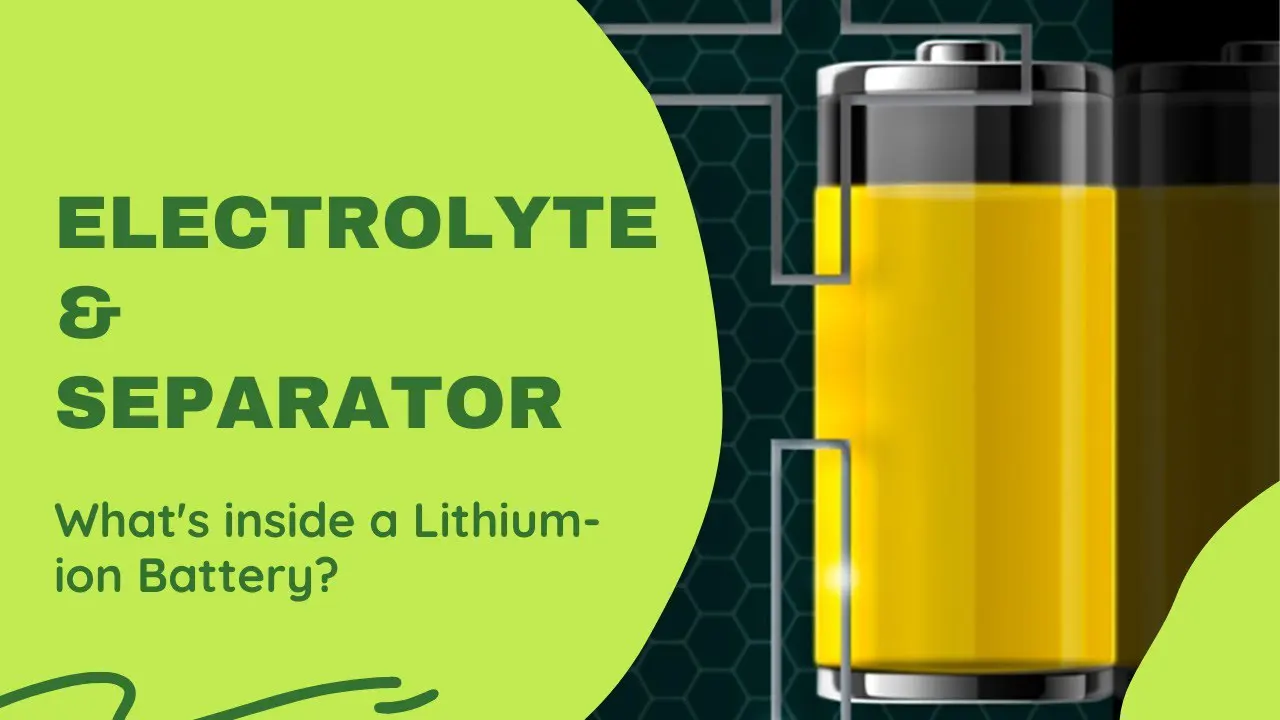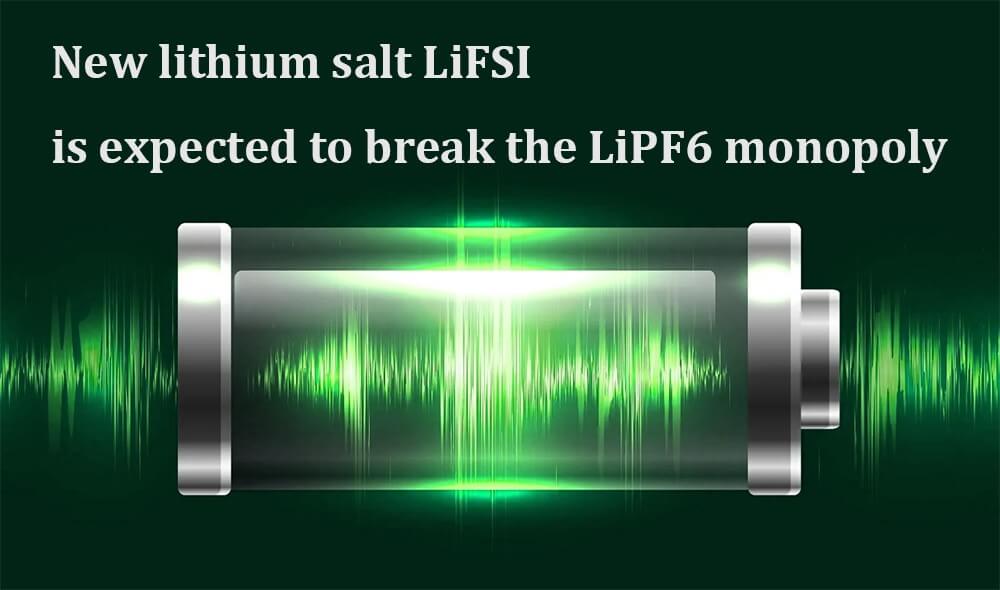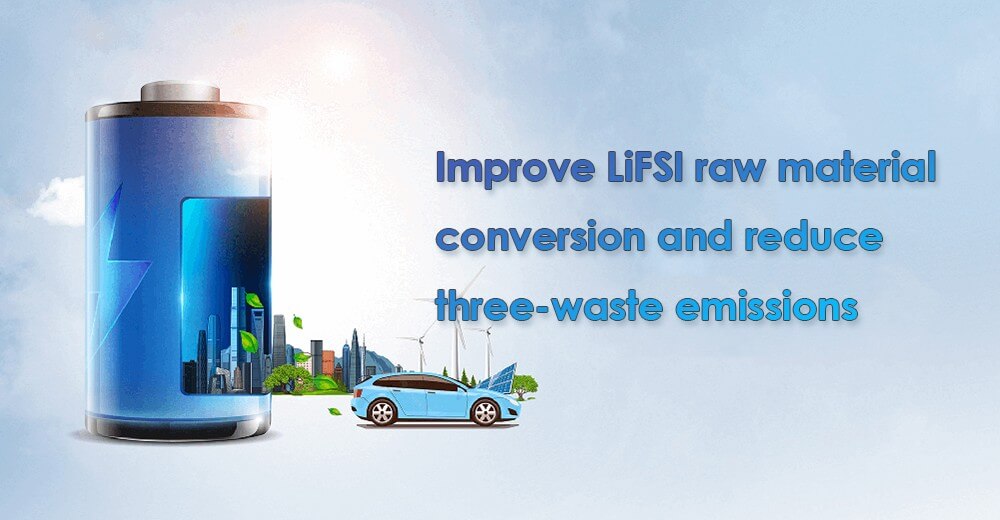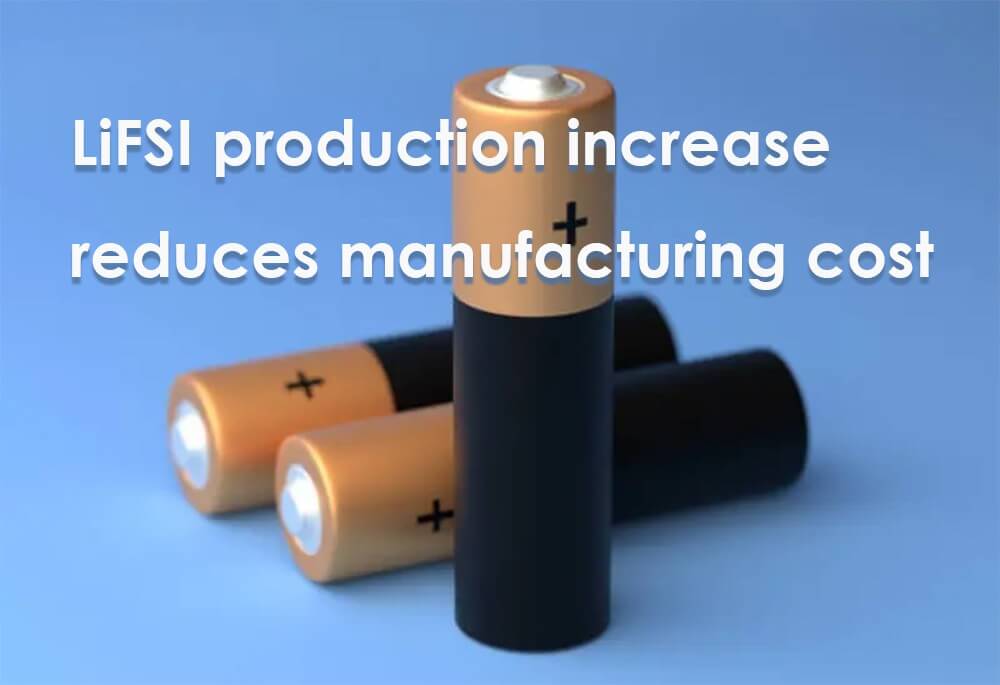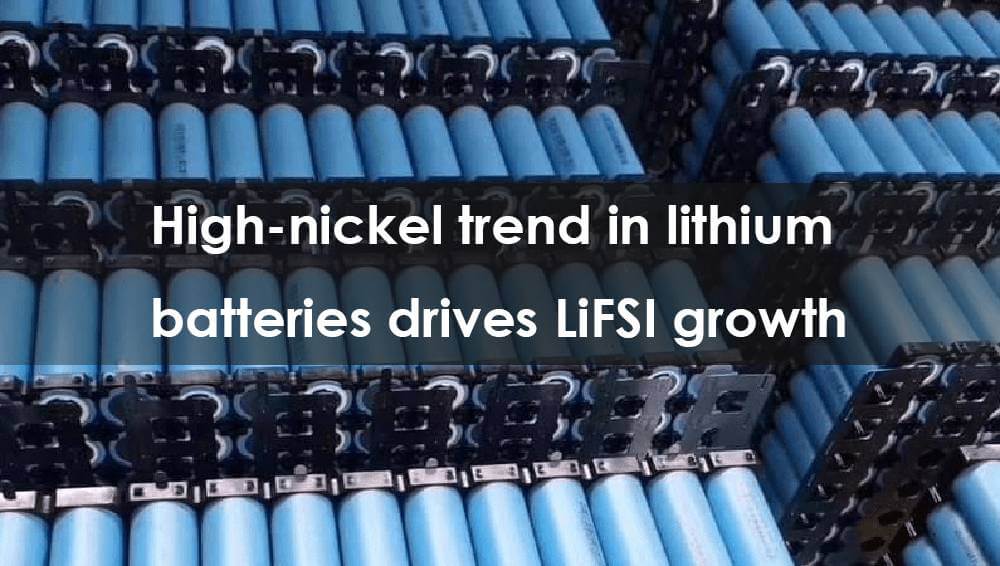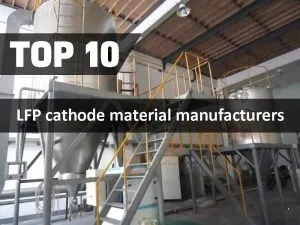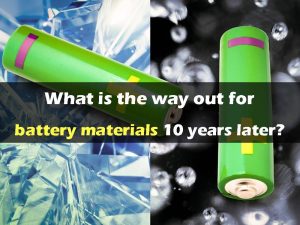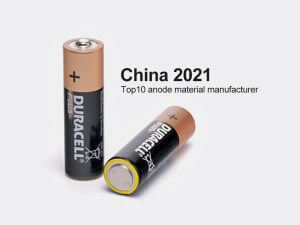LiFSI industry research - LiFSI presents high growth space
Lithium-ion batteries are mainly composed of four major parts: cathode material, anode material, electrolyte, and diaphragm. Electrolyte is one of the key raw materials for lithium-ion batteries.
It plays the role of conducting and transporting energy between the cathode and anode of the battery, which is the guarantee for the lithium-ion battery to obtain the advantages of high voltage and high specific energy, and its cost accounts for about 5%-10% of the production cost of the lithium-ion battery.
The electrolyte is generally prepared from high-purity organic solvents, electrolytes, additives and other materials under certain conditions and in a certain proportion, and the electrolyte occupies an important position.
As a new type of lithium salt, LiFSI has excellent performance and broad prospects for development.

New lithium salt LiFSI is expected to break the LiPF6 monopoly
The development of lithium battery drives the rapid growth of electrolyte demand. The rapid increase in the production of lithium batteries has driven the demand for electrolytes to continue to increase. Lithium salt is a key part of the preparation of electrolyte, and LiPF6 takes the lead in the application of lithium salt.
The electrolyte is actually an electrolyte (which can be referred to as lithium salt) dissolved in a suitable organic solvent, plus a small amount of functional additives. The properties of the electrolyte affect the conductivity and safety of the product.
However, LiPF6 has many problems, which limit its expansion of application scenarios. These drawbacks need to be solved urgently, and new lithium salts need to be developed in order to broaden the application scenarios.
LiFSI has excellent performance and is more suitable for fast charging and high battery life. In view of the performance shortcomings of LiPF6, a variety of new lithium salts have been developed, among which lithium bisfluorosulfonimide has the fastest development and the best application prospect.
At present, LiFSI is mainly used as an electrolyte additive in a small amount mixed with LiPF6, and the overall dosage is small. Compared with LiPF6, LiFSI is more excellent in electrolyte conductivity, high and low temperature performance, thermal stability, hydrolysis resistance, and inhibition of gas swelling, so it is also regarded as one of the most promising lithium salts to replace LiPF6.
At present, the most widely used lithium battery is the power battery, so the development direction of some electrolytes needs to adapt to the needs of the power battery.
Generally speaking, power batteries have two major demands: high battery life and fast charging. The existing research results show that, on the one hand, the electrolyte doped with LiFSI has stronger electrical conductivity.
On the other hand, compared with LiPF6, LiFSI is more suitable for fast charging, that is, high-rate charging, and operating at high rates can maintain higher battery capacity. On the whole, LiFSI has the performance basis to increase the addition amount or replace LiPF6.
On the whole, LiFSI can make up for the shortcomings of LiPF6 performance in many aspects, and is expected to break the monopoly of LiPF6 lithium salts. However, problems such as difficult production technology, high production cost, and corrosion of positive aluminum foil once limited the application and promotion of LiFSI.
However, in recent years, the technology on the supply side has been continuously upgraded and the applications on the demand side have continued to expand, all of which are accelerating the promotion of LiFSI.
Chinese manufacturers breaks through LiFSI production technology
In 1995, the use of LiFSI as a lithium salt was first proposed. China started late, and it was not until 2017 that LiFSI production capacity was put into operation. LiFSI mainly has two synthetic routes: chlorosulfonic acid method and sulfuryl fluoride method, and now the chlorosulfonic acid method is the main method. The synthesis process can be divided into three main steps: synthesis of bischlorosulfonimide, fluorination, and lithiation.
There are already companies around the world that produce and sell LiFSI, but the overall scale is not large, with a total production capacity of about 22,600 tons. Limited by factors such as capacity scale and capacity ramping, currently only Tinci LiFSI has the highest shipment volume, and DFD in lithium hexafluorophosphate companies, CAPCHEM, and CHEMSPEC all have shipments, showing a competitive pattern of one super and many strong.
Several lithium ion battery electrolyte companies are planning LiFSI capacity building. According to the announcements of various companies, whether it is an old company that has mastered the technology or a new company with a new project, they have accelerated the layout of LiFSI production capacity.
It is expected to be put into production before 2025, with a planned total production capacity of about 200,000 tons, and the existing production capacity of about 220,000 tons. Tinci has become the largest supplier of LiFSI, and the industry concentration has declined slightly.
Improve the existing LiFSI process, store and develop a variety of new LiFSI preparation and recovery technologies. In addition to the above two currently used chlorosulfonic acid synthesis processes, several companies and research institutes have begun to stock up on new preparation technologies.
By shortening the process flow and reducing the unit consumption of raw materials, the existing production process is improved to promote LiFSI to further reduce costs and increase efficiency.
Improve LiFSI raw material conversion and reduce three-waste emissions
The high price of LiFSI inhibits the enthusiasm of downstream applications. The price of LiFSI was once at a high level, and the high price seriously affected the enthusiasm of downstream manufacturers to apply. According to relevant data, the average market price of LiFSI will drop from a peak of 700,000 RMB/ton in 2017 to 400,000 RMB/ton in 2021.
Mainly by improving the comprehensive utilization of LiFSI raw materials and wastes and the improvement of process technology, the cost is effectively controlled and the selling price is reduced. In the synthesis process, the utilization rate of raw materials and solvents is high, and the single-pass conversion rate needs to be improved. The synthesis process of LiFSI is mainly based on the chlorosulfonic acid method, but the raw materials used are different.
Reduce the discharge of LiFSI three wastes, and make by-products sold abroad to reduce costs. Since the process of producing LiFSI will produce pollutants containing fluorine, chlorine and sulfur, the treatment cost per ton exceeds 10,000 RMB.
Therefore, it is expected that the cost of a single ton of LiFSI raw materials can be reduced to about 70,000 RMB under the dual effects of lithium prices and superimposed process upgrades.
LiFSI production increase reduces manufacturing cost
The increased capacity of LiFSI can effectively reduce manufacturing costs. According to relevant data, the manufacturing cost of LiFSI accounts for about 40% of the total cost, and the manufacturing cost per ton exceeds 100,000 RMB.
The manufacturing cost per ton of LiFSI is calculated based on the annual output and manufacturing cost of LiFSI, which will increase from 63 tons in 2016 to 772 tons in 2021. After the output increases tenfold, the manufacturing cost per ton of LiFSI will be halved.
It is predicted that the single-ton manufacturing cost of LiFSI can be reduced to 70,000 RMB in the future. Under the circumstance of falling prices of raw materials such as lithium carbonate, the total comprehensive cost is predicted to be about 160,000 RMB/ton. On the whole, there are currently a large number of LiFSI production capacity companies, and the total capacity planning is relatively high.
There are basically no production technical barriers for old companies that already have production capacity. The energy is mainly concentrated in enhancing the utilization capacity of raw materials, optimizing the process, recycling and other aspects. For new companies planning to build, it still takes a certain amount of time to complete the installation and adjustment of equipment. On the whole, the domestic application of LiFSI in China will be accelerated in the future.
High-nickel trend in lithium batteries drives LiFSI growth
The trend of high nickel in ternary lithium batteries is obvious, and LiFSI is suitable for high nickel batteries. According to statistics, from 2018 to 2021, the proportion of high-nickel ternary batteries in all ternary batteries in China has increased year by year, and the proportion will be close to 50% in the first half of 2022.
This is mainly the result of downstream products’ demand for high battery life and the reduction of upstream high-priced cobalt consumption. In the future, the proportion of high nickel ternary is expected to further increase.
Since nickel is a highly reactive element, high content of nickel will lead to poor thermal stability. The chemical stability and temperature stability of LiFSI are compatible with high nickel batteries and are significantly better than LiPF6, so this trend will drive the growth of LiFSI demand.
A variety of batteries suitable for high nickel are launched. The 4680 battery launched by Tesla uses high-nickel 811 as the positive electrode material, and has excellent battery life. From the perspective of stability, LiFSI is more suitable for the 4680.
CATL released the Kirin battery and claimed that the vehicle has a battery life of 1,000 kilometers, and a 10-minute fast charge is possible. The battery is compatible with ternary materials or lithium iron phosphate, and the battery system has a higher mass energy density.
At present, CATL has not announced the specific formula of the electrolyte, but the addition of LiFSI in the ternary part will be higher than 3%. Since the release of Kirin battery and 4680 battery, many car companies have responded successively.
The introduction of high-nickel batteries will drive the increase in LiFSI usage, and the early mass production of 4680 will accelerate the LiFSI application process. Since Kirin and 4680 are mainly designed for power batteries. In addition to Kirin and 4680 batteries, the 18650 batteries with the highest standardization are also used in the power battery.
And power batteries are currently the most in-demand and fastest-growing downstream, so they will be the most important application area of LiFSI in the future. According to relevant statistics and forecasts, the global lithium-ion power battery will reach 1.5TWh in 2025.
Therefore, on the one hand, the demand for LiFSI benefits from the rapid development of lithium batteries, and the demand for lithium salts continues to grow. On the other hand, the instability of high nickel has led to an increase in the proportion of LiFSI added, and the battery consumption of some models may exceed 10%.
The increase in the cost of lithium salts has a limited impact on the overall cost of the battery. The production cost of lithium-ion batteries mainly includes raw materials, PACK costs and other costs, among which the electrolyte includes solutes, solvents, and additives, with the electrolyte cost accounting for the highest proportion.
According to the data, the average production cost of lithium batteries in 2021 is US$101/KWh. Calculated at the price of LiFSI and LiPF6, assuming that all electrolytes are changed from LiPF6 to LiFSI, the cost of lithium battery production will increase by about 3%.
However, in practical applications, the amount of LiFSI has not reached the same level as LiPF6, and the increase will be less than 3%, so the impact on battery cost is limited.

